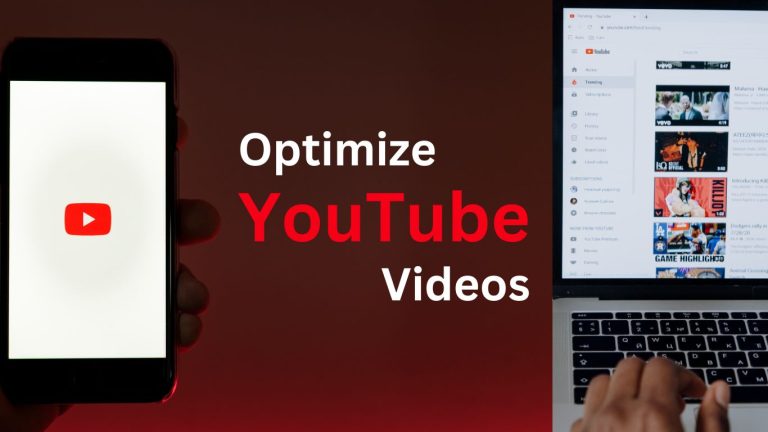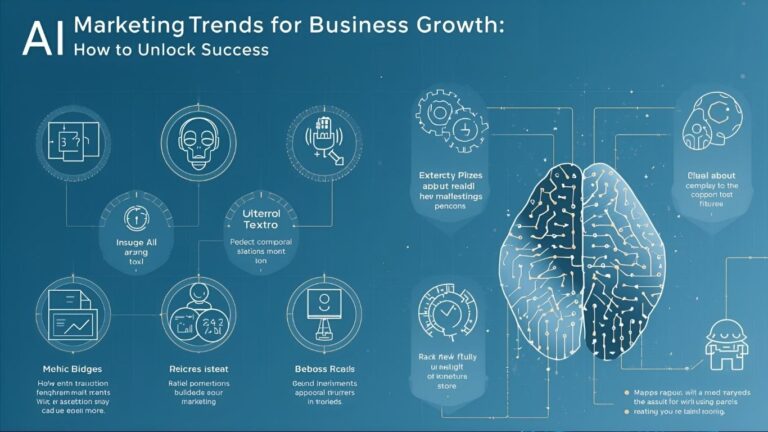Reduce Website Bounce Rates: 10 Effective Steps for Better Engagement #SEO #UserExperience #BounceRate
Reduce Website Bounce Rates: 10 Powerful Steps to Boost Engagement
If you’ve ever wondered why visitors are leaving your site without engaging, it’s probably because of high bounce rates. Reducing website bounce rates is critical for any business looking to improve user engagement, build a lasting relationship with their audience, and increase conversions. Think of your website as a storefront – if customers walk in, look around for a moment, and leave without interacting, it’s as if they never showed up at all. But, unlike a physical store, you can’t walk out and greet them to ask why they left. However, reducing bounce rates is a proactive step that can turn passive visitors into loyal customers.
This guide will walk you through 10 powerful steps that will help you optimize your website and create an engaging user experience that keeps visitors clicking, reading, and exploring your content.
Step 1 – Optimize Website Speed
Website speed is one of the most important factors in keeping visitors engaged. Imagine you’re at a coffee shop, and the barista takes an eternity to serve you. How long would you wait before walking out? Similarly, users expect your site to load quickly, and they’re not afraid to bounce if it doesn’t. Reducing website bounce rates starts with making sure that your site loads in under 3 seconds. The faster the load time, the better your chances of keeping your audience hooked.
There are several tools, such as Google PageSpeed Insights or GTMetrix, that can help you test your website’s speed and identify potential problems. For example, large image files or bloated scripts can slow your site down. Here are some tips to boost your site speed:
Compress and optimize images.
Minimize HTTP requests.
Use a content delivery network (CDN) to serve your content faster.
The more you focus on speed, the more your visitors will appreciate it. Faster sites not only reduce bounce rates but also improve your SEO ranking.
Step 2 – Improve Mobile Responsiveness
Did you know that more than half of all web traffic comes from mobile devices? That’s a huge chunk of your audience that needs to have an optimized, mobile-friendly experience. If your site isn’t responsive, meaning it doesn’t adjust to different screen sizes and orientations, you’re driving away mobile users faster than you can say “bounce rate.”
Reducing website bounce rates on mobile requires that your site is optimized for small screens. Here’s how you can do that:
Use responsive design (most modern website themes offer this).
Test your website’s mobile performance.
Make sure buttons and links are easy to tap and navigate.
Also, keep in mind that users tend to bounce faster on mobile if they have trouble reading content or navigating the site. Ensuring your mobile experience matches the desktop one can drastically lower those rates.
Step 3 – Enhance Website Design
A good-looking website can make a world of difference when it comes to user engagement. However, great design isn’t just about aesthetics – it’s about guiding visitors through your site smoothly and making their experience enjoyable. Reducing website bounce rates involves focusing on a clean, easy-to-navigate layout.
Key design factors include:
Easy navigation: Keep menus clear and logical.
Consistent branding: Make sure your colors, fonts, and logos are cohesive.
Simple, clear CTAs: Ensure that your call-to-action buttons are visible and straightforward.
Even if you have the best content in the world, poor design can turn users away. A beautifully designed site is inviting, and when visitors feel welcome, they’re less likely to bounce.
Step 4 – Create Engaging Content
Now, let’s talk about the heart of your website: content. To reduce website bounce rates, your content has to be both valuable and engaging. Visitors should find exactly what they’re looking for as soon as they land on your page. And if they don’t, well… you guessed it – they’re bouncing.
Here’s how you can keep users engaged:
Know your audience: Create content that addresses their needs or solves their problems.
Use compelling headlines and subheadings.
Break up text: Use bullet points, numbered lists, and short paragraphs to make the content easy to digest.
The more visitors can relate to and interact with your content, the longer they’ll stay.
Step 5 – Add Internal Links & CTAs
Links help your audience explore more of your website. Internal links not only make your content more valuable but also encourage users to navigate through different pages. If you can keep users exploring other parts of your site, you’re on your way to reducing those bounce rates.
Here’s a little secret: Don’t just add internal links for the sake of it. Make sure they’re contextually relevant. For example, if you’re writing about the importance of website speed, link to your “How to Improve Site Speed” blog post.
Including clear CTAs within your content also encourages users to take action – whether it’s signing up for a newsletter, exploring more articles, or making a purchase. Clear CTAs guide the user through the journey, reducing website bounce rates by encouraging interaction.
Step 6 – Optimize for SEO
Optimizing your site for SEO is another important strategy for keeping users on your page. When users can easily find your content in search engines, they’re more likely to engage with it.
Here’s a breakdown of key SEO factors to focus on:
Keyword optimization: Include your target keywords naturally in your content.
Meta descriptions: Write compelling descriptions that accurately represent the page’s content.
Alt text for images: Help search engines understand your images, making it easier for people to find them.
By improving your on-page SEO, you not only attract more visitors but also increase the chances of keeping them engaged, which in turn helps reduce website bounce rates.
Step 7 – Improve User Experience (UX)
User experience, or UX, directly impacts how visitors feel about your website. If users find it difficult to navigate, read, or interact with your content, they’ll quickly leave. Reducing website bounce rates begins with an excellent UX design.
A few ways to enhance UX:
Simplify navigation and site structure.
Optimize page load time (we already touched on this).
Provide easy access to important information.
Make your website visually appealing without being overwhelming.
User experience is often the make-or-break factor between a bounce and a conversion. When users feel comfortable and happy with their experience, they’re more likely to stay and interact with your content.
Step 8 – Utilize High-Quality Visuals
Visuals are a powerful tool for engaging your visitors. Whether it’s high-quality images, infographics, or videos, visuals make your content more appealing. Reduce website bounce rates by incorporating visuals that resonate with your audience and enhance the content.
Consider the following:
Use original, high-resolution images relevant to your content.
Videos should be short, engaging, and informative.
Infographics can help simplify complex information and improve readability.
Always remember: too many visuals can slow down your site, so make sure they’re optimized for speed!
Step 9 – Implement Trust Signals
If your visitors don’t trust your website, they won’t stick around. Adding trust signals helps boost credibility and reassure users that your site is legitimate. This can significantly reduce bounce rates and even lead to conversions.
Here’s what you can include:
SSL certificates: Secure your website with HTTPS to ensure user security.
Customer testimonials: Showcase social proof to build trust.
Third-party endorsements: If relevant, include reviews or certifications from trusted sources.
Trust signals reassure visitors that they’re in the right place and that it’s safe to interact with your site, whether by making a purchase or filling out a contact form.
Step 10 – Reduce Pop-Ups & Distractions
While pop-ups can be an effective marketing tool, they can also be a major turn-off for visitors. Reducing website bounce rates often requires minimizing these interruptions. A sudden pop-up can make users feel overwhelmed and encourage them to leave.
Instead of relying on pop-ups, consider:
Using banners or slide-ins that appear only after a user has spent some time on the page.
Offering an exit-intent pop-up (appears when the user tries to leave the page).
By minimizing distractions, you allow visitors to focus on what’s important – the content – which keeps them engaged.
Conclusion: Boost Your Engagement and Reduce Website Bounce Rates
Now that you’re equipped with these 10 powerful steps, it’s time to put them into action! Reducing website bounce rates isn’t an overnight process, but with consistent effort, you’ll see results. Focus on optimizing speed, improving user experience, enhancing content, and adding internal links. Trust signals and mobile responsiveness also play a huge role in keeping visitors on your site.
Remember, your website’s success is directly linked to how well you engage your audience. So, start implementing these strategies today, and watch your bounce rates drop while user engagement rises.
5-15 Bullet-Point Summary:
- Website speed is a crucial factor in reducing bounce rates; ensure your site loads under 3 seconds.
- Mobile responsiveness is essential as more than half of web traffic comes from mobile devices.
- A clean, intuitive website design encourages users to stay and explore more pages.
- Engaging content is key to keeping visitors interested and reducing the likelihood of them bouncing.
- Use internal links and clear CTAs to guide visitors to other relevant pages on your website.
- SEO optimization helps increase visibility and encourages users to stay engaged.
- A smooth user experience (UX), with simplified navigation and easy access to content, is essential for lower bounce rates.
- Incorporate high-quality visuals, such as images and videos, to enhance the user experience.
- Implement trust signals like SSL certificates and customer testimonials to increase credibility.
- Pop-ups and other distractions should be minimized to avoid driving users away.
- Consistent branding and a cohesive website layout foster a welcoming, professional environment.
- Measure and track bounce rates through tools like Google Analytics to understand how well your efforts are working.
- Focus on content relevance to ensure users find what they came for and engage with your website.
- Use exit-intent pop-ups or subtle pop-up designs to avoid overwhelming users.
- Optimize your site for SEO to rank higher and attract qualified traffic, reducing bounce rates.
10–15 Unique FAQs with Answers
What is bounce rate?
Bounce rate refers to the percentage of visitors who leave your website after viewing only one page. A high bounce rate means visitors are not engaging with your content, which can hurt your SEO and conversions.
How do I reduce bounce rates?
To reduce bounce rates, focus on improving website speed, creating engaging content, enhancing user experience (UX), and making sure your website is mobile-friendly.
Why is my bounce rate high?
A high bounce rate could indicate poor user experience, irrelevant content, slow page load times, or a lack of clear navigation. Identifying the root cause is key to lowering it.
What is a good bounce rate?
A bounce rate between 26% and 40% is considered excellent. Anything over 70% may indicate that improvements are needed to enhance user engagement.
How can I track my bounce rate?
You can track your bounce rate using Google Analytics. It provides insights into the number of visitors who leave your site after viewing just one page.
Does SEO help reduce bounce rates?
Yes, SEO plays a major role in attracting the right audience. Optimizing your site for search engines ensures that your content is relevant to your visitors, which encourages them to stay longer.
What is mobile responsiveness, and why does it matter?
Mobile responsiveness ensures that your website adapts to different screen sizes. It matters because more users browse on mobile devices, and a non-responsive website can drive them away.
How does website speed affect bounce rates?
Slow websites cause frustration. Visitors are likely to leave if pages take too long to load. Reducing load times improves user retention and reduces bounce rates.
How do internal links help reduce bounce rates?
Internal links guide visitors to other relevant content on your site. They encourage further engagement by leading users to additional information they may find interesting.
What role does UX play in bounce rates?
A positive UX keeps users engaged. A well-designed website with easy navigation, quick loading, and intuitive design reduces bounce rates and keeps visitors coming back.
What are trust signals?
Trust signals, like SSL certificates, customer reviews, and security badges, help build credibility. When users feel safe on your website, they are less likely to leave immediately.
What type of content reduces bounce rates?
Engaging, relevant, and well-organized content keeps users interested. Create content that addresses user needs, provides solutions, and is easy to digest with visuals and headings.
How can I improve my site’s navigation?
Simplify your menu, use clear categories, and make sure important information is easily accessible. Avoid clutter and ensure that visitors can find what they’re looking for without frustration.
Why are pop-ups bad for my bounce rate?
Pop-ups interrupt the user experience and can be frustrating, causing users to leave. If you must use them, ensure they are non-intrusive and appear at the right moments.
How do I measure user engagement?
User engagement can be measured by tracking actions like clicks, time spent on the site, pages visited, and conversions. Tools like Google Analytics and heatmaps provide insights into how visitors interact with your content.
Explore These Valuable Resources
To deepen your understanding of reducing website bounce rates and enhancing user engagement, here are some expert resources and insightful links to help you master the topic:
Google PageSpeed Insights
Explore Google’s official tool to analyze and improve your website’s speed, a key factor in reducing bounce rates.
Moz: The Beginner’s Guide to SEO
A comprehensive guide to SEO, offering valuable tips on optimizing your website for search engines and improving engagement.
Neil Patel: Bounce Rate
Dive into Neil Patel’s expert take on bounce rates, including actionable strategies to reduce them and increase engagement.
HubSpot: Mobile-Friendly Website Optimization
Learn how to optimize your website for mobile devices to reduce bounce rates and enhance user experience, as mobile traffic continues to grow.
Yoast: SEO for Beginners
A valuable resource from Yoast for beginners in SEO, providing tips and insights to improve your site’s visibility and user engagement.
Smashing Magazine: Best Practices for Web Design
Smashing Magazine offers a deep dive into web design best practices that can help you create a seamless, user-friendly experience.
Google Analytics Help Center
Understand how to measure and track bounce rates using Google Analytics, offering detailed instructions on how to analyze user engagement.
Content Marketing Institute
Explore expert advice on creating content that resonates with your audience, keeping them engaged and reducing bounce rates in the process.
VWO: How to Improve UX and Reduce Bounce Rate
Learn from VWO’s insights on how improving UX can lead to better engagement and reduced bounce rates.
W3C: Mobile Web Best Practices
Access the official Mobile Web Best Practices to ensure your site is responsive and performs well across all devices.
These resources will not only help you understand the importance of bounce rates but also provide strategies to reduce website bounce rates, optimize content, and improve SEO performance. Dive deeper into each link for actionable insights that can drive better engagement and improved user retention on your site.
Blog Recommendation
If you’re looking for more insights on digital marketing and website optimization, check out this insightful blog post. It offers valuable tips and strategies that can help improve your website’s performance and increase engagement.







